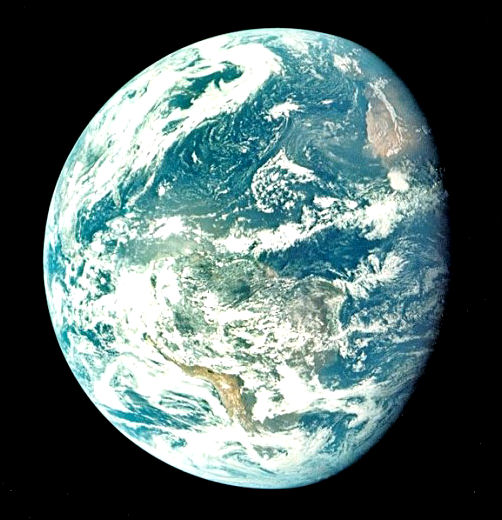Apollo Expeditions to the Moon
CHAPTER 15.6
LIFE IN AN OCEAN OF GAS
Our atmosphere is the breath of life to everything we do. It
is an ocean of gas in which we live as fish live in an ocean of
water. It is an integral part of our planet, and we cannot
understand Earth's history without also understanding its
atmosphere. In seeking to do this, the wide variation from the
airless Moon to the exotic and turbulent atmosphere of Jupiter
provides an invaluable context and perspective. As it happens,
the solar system has several planetary atmospheres between these
extremes.
Earth's atmosphere lies intermediate in surface pressure
between that of Venus and Mars, Venus' atmosphere being about 100
times that of Earth, and Mars' about one one-hundredth. The
composition of the atmospheres of Venus and Mars is predominantly
carbon dioxide, while Earth's today is predominantly nitrogen and
oxygen. On the other hand, the amount of carbon dioxide tied up
in the carbonate of the Earth's crust is comparable to what we
see free in the atmosphere of Venus today. Presumably on Earth
carbon dioxide exhaled from volcanoes, in the presence of the
abundant water, was soon taken up into the crustal rocks. Life on
Earth doubtless accounts for the presence of so much oxygen in
the atmosphere, most of which was probably generated by
photosynthesis. From the Mariner observations of Mercury, it
appears that Mercury is closer to the Moon than to Mars as far as
atmosphere is concerned.
Much patient work remains to bring out the full significance
of Apollo observations. Nevertheless it is already clear that
Apollo has made a great contribution to the development of the
new field of comparative planetary studies, a field that over the
years will provide us priceless insights into our own planet. In
days of deep concern over the Earth's environment and finite
resources, comparative planetology is a new science of
incalculable importance, and Apollo led the way.







